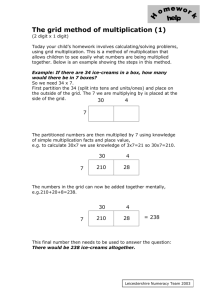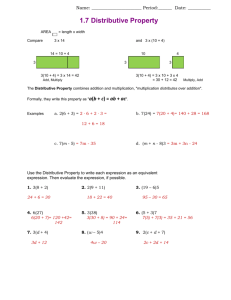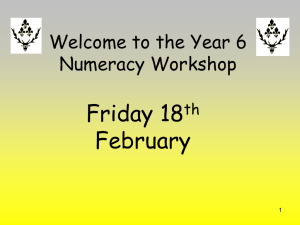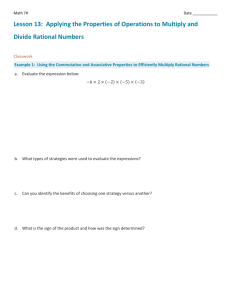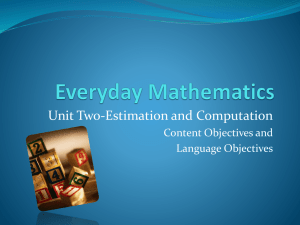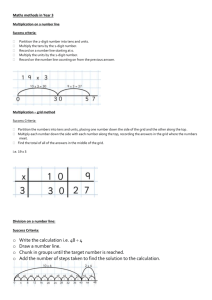Introductory Lesson – Area Model with Multiplication of
advertisement
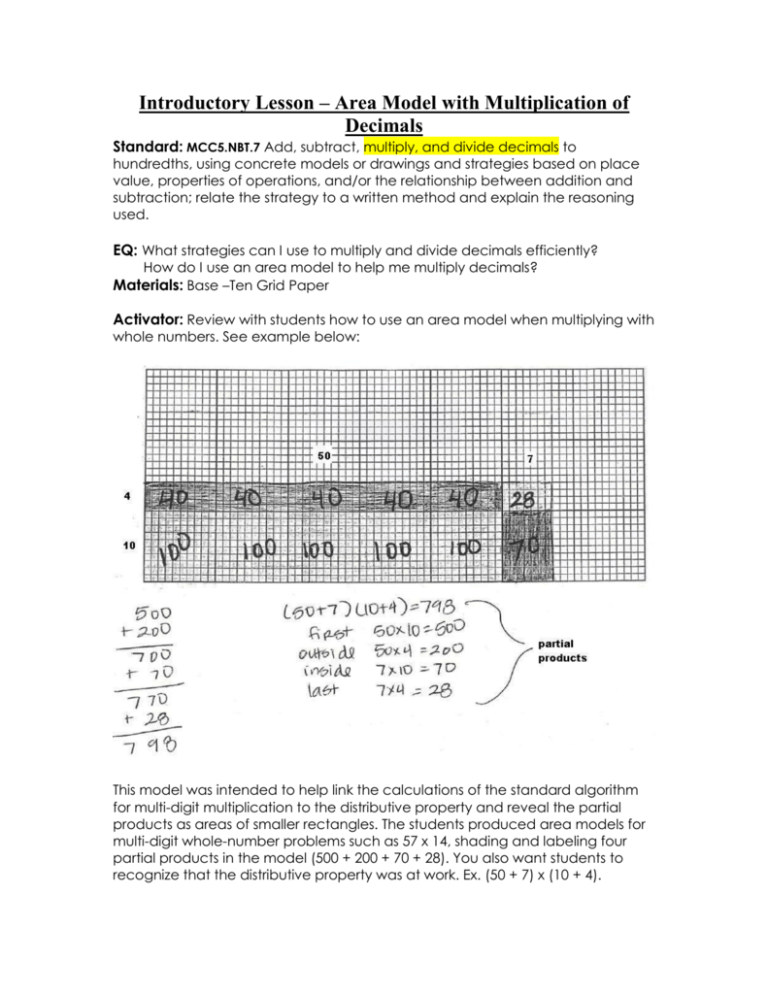
Introductory Lesson – Area Model with Multiplication of Decimals Standard: MCC5.NBT.7 Add, subtract, multiply, and divide decimals to hundredths, using concrete models or drawings and strategies based on place value, properties of operations, and/or the relationship between addition and subtraction; relate the strategy to a written method and explain the reasoning used. EQ: What strategies can I use to multiply and divide decimals efficiently? How do I use an area model to help me multiply decimals? Materials: Base –Ten Grid Paper Activator: Review with students how to use an area model when multiplying with whole numbers. See example below: This model was intended to help link the calculations of the standard algorithm for multi-digit multiplication to the distributive property and reveal the partial products as areas of smaller rectangles. The students produced area models for multi-digit whole-number problems such as 57 x 14, shading and labeling four partial products in the model (500 + 200 + 70 + 28). You also want students to recognize that the distributive property was at work. Ex. (50 + 7) x (10 + 4). Lesson Part 1: Using the grid paper, model this problem: 5.7 x 1.4. Explain to students that indeed, the decimal multiplication problem 5.7 x 1.4 could be shown with the same base-10 diagram as the whole number multiplication 57 x 14, but with dimensions that are labeled as one-tenth the size of those in the whole number problem. Tell students that now that a square of 100 little boxes is 1 whole, a row of 10 squares is .1, and one tiny square is .01. You can do this by showing a key. Students need to note that the multipliers are the dimensions of the rectangle and the area shows the product. Further, in order to find the total product, one sums the areas of the smaller rectangles. In the diagram below, the smaller rectangles have the following dimensions: (1 x 5), (1 x .7), (.4 x 5), (.4 x .7) and respective areas of 5, 0.7, 2.0, and 0.28 square units, for a total of 7.98 square units. Finally, we want students to make the connection that the smaller regions have the same dimensions and the same areas as the partial products produced using the distributive property as this calculation shows: 5.7 x 1.4 = (5 + .7) x (1 + .4) = (5 x 1) + (5 x .4) + (.7 x 1) + (.7 x .4) = 5 + 2.0 + 0.7 + 0.28 = 7.98. Lesson Part 2: Pass out grid paper and have students set up the new problem: 2.6 x 4.3. Allow students to use two different color crayons; one color for the width (4.3) and one for the length (2.6). Allow them to work in groups. Give plenty of grid paper for mistakes. Once everyone has their grid labeled, then see if they can find the partial products. Find and color the product of 4 x 2 Find and color the product of .3 x 2 Find and color the product of .6 x 4 Find and color the product of .6 x .3 This also can look like this: (4 + .3) x (2 + .6) – Use distributive property to get answer…. Summarizer: Students are given a problem (2.3 x 4.1) and they will need to do it independently using grid paper.
